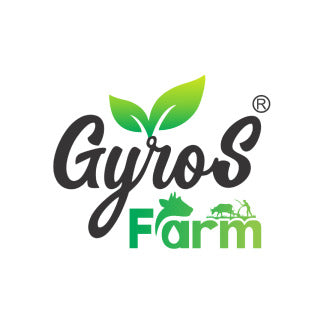India produces around 1.2 million tonnes of vanaspati ghee annually, which is roughly 10% of the total edible oil market.
It looks like a traditional ghee, might even taste somewhat similar, and is quite cheap. But, but, but don't let that fool you!
Behind its super affordability and convenience, there lies a hidden reality and questionable ingredients which lead to some serious health risks.
Let’s find out what compromises you make by choosing it over pure traditional ghee!
What is Vanaspati Ghee?

Vanaspati Ghee, widely known as “Dalda”, is hydrogenated vegetable oil. It is used as a substitute cooking fat for Traditional Ghee or Oil.
It is made by hydrogenating (adding Hydrogen) refined Palm, Soybean, Sunflower, and Groundnut oils. Sometimes, vitamins A and D are also added to increase its nutritional value.
Overall, vanaspati ghee contains various emulsifiers and additives to improve its texture and shelf life.
Differences Between Vanaspati Ghee and Desi Ghee
Some misconceptions revolve around the differences between Vanaspati Ghee and Desi Ghee.

Let us see what the differences are.
|
Aspect |
Vanaspati Ghee |
Desi Ghee |
|
Source |
Vegetable oils (Sunflower, Soybean, Groundnut, Palm) |
Pure cow or buffalo milk |
|
Nutrition |
High in trans fats and additives, added vitamins to increase nutritional value |
Rich in healthy fats, vitamins A, D, E, and K |
|
Health Impact |
Linked to heart diseases, cholesterol increase and obesity |
Promotes digestion and boosts immunity |
|
Cost |
Cheap (176.9 Rs. Per Lit.) |
Expensive (~1000 Rs. Per Kg.) |
|
Flavor |
Artificial |
Natural and aromatic |
Vanaspati Ghee: Pros and Cons
Vanaspati Ghee might seem like a real deal when it is five times cheaper than its counterparts. But is it? Let’s find out!
Pros
-
Cheap: Vanaspati Ghee is much cheaper than Traditional Desi Ghee, making it an economical alternative.
-
Longer Shelf Life: Vanaspati Ghee has a longer shelf life than Traditional Ghee.
Cons
-
Health Risks: Regular consumption of Vanaspati Ghee has been shown to increase LDL (Bad cholesterol), heart disease, diabetes, and obesity.
-
High Trans Fats: WHO recommends avoiding trans fats, and also it is banned in several countries.
Why did it become popular?
So, if vanaspati ghee is so harmful, why did it become popular in the first place?
It dates back to the 90s when vanaspati ghee was falsely advertised as a “healthy” and cheap alternative to desi ghee. But soon, it got debunked.
As of now, there is a 2% by-weight limit on trans fats according to FSSAI.
Many vanaspati brands claim to have zero trans fats, but some amount of trans fats are still there.
Is Dalda good for health?
Dalda is the most popular brand of vanaspati ghee.
It is not just unhealthy but also pretty harmful to our health. It increases the risks of heart attacks, obesity, and diabetes exponentially.
However, Dalda now claims to be “trans-fat free.” But that doesn’t mean it’s healthy.
It contains a high amount of saturated fats, which are known to raise LDL (bad cholesterol) levels. It is being extremely processed and deodorized which also doesn’t help either.
Healthier Alternatives to Vanaspati Ghee
There are several alternatives for Vanaspati Ghee present in the market!
-
Buffalo and Cow Ghee: Pure buffalo and cow ghee are nutritious and packed with healthy fats if consumed in moderation.
-
Cold-pressed Oils: Cold-pressed oils like groundnut, coconut, and mustard oils are proven to be much better than vanaspati ghee.
-
Olive Oil: For low-heat cooking, olive oil is packed with healthy monosaturated fats, making it a great alternative to vanaspati ghee.
How to Identify Real Ghee vs. Vanaspati?
If you’re not sure whether you are using Vanaspati Ghee or not, you can:
-
Check the package labels for terms like “Vanaspati Ghee,” “Hydrogenated Oil,” or "Trans fats" content; if it’s high, you might be using Vanaspati Ghee.
-
Vanaspati ghee has a chemical-ish smell, whereas real desi ghee smells nutty and is free of any chemical odour.
Conclusion
In short, if you ask, "Is vanaspati ghee good for health", I would say no.
But it is understandable if you are using vanaspati ghee for occasional frying or large-scale meals, as ghee can be quite expensive to that extent.
If you have it in moderation, you won’t face many problems; just avoid regular consumption.
However, never use vanaspati ghee as a regular alternative to ghee or oil, as continuous use of it can increase the risk of heart disease.
Frequently Asked Questions?
What is vanaspati ghee made of?
Vanaspati ghee is primarily made from hydrogenated vegetable oils, like palm oil or palm olein. It takes on a solid form similar to pure desi ghee, making it a popular, affordable substitute for cooking due to its longer shelf life.
Is Dalda ghee safe to eat?
Dalda ghee contains trans-fatty acids, which are not considered healthy. If you're consuming it regularly without proper exercise or a balanced diet, it can contribute to high cholesterol levels.


